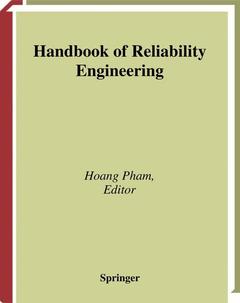Description
Handbook of Reliability Engineering, Softcover reprint of the original 1st ed. 2003
Coordinator: Pham Hoang
Language: French
Subject for Handbook of Reliability Engineering:
Publication date: 08-2014
663 p. · 20.3x25.4 cm · Paperback
Publication date: 04-2003
663 p. · 19.3x24.2 cm · Hardback
Description
/li>Contents
/li>Comment
/li>
The more than 60 contributors are drawn from industrial and academic backgrounds all over the world
Provides a broad mix of theoretical and applied reliability, with examples reflecting the growing importance of the subject to the automotive, public transport, electronics, telecommunications, software and other industries. This is gaining increased public awareness and therefore importance because of design flaws in existing systems such as railways and concerns over other safety-critical systems such as those used for the disposal of hazardous wastes. Reliability is now a key concern at the design stage of most engineering projects.
Reliability has a wide field of application within many fields of engineering: civil, mechanical, electronic, electrical and manufacturing.
Includes supplementary material: sn.pub/extras
These books may interest you

Reliability Engineering 158.24 €


